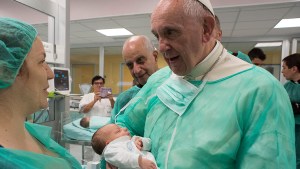One of the wonderful things about scientific advances has been the notable reduction in the number of women and babies dying in childbirth. Yet, in the mid 18th century, French midwifeAngélique du Coudray is believed to have trained around 10,000 women in the “art of delivery” directly and indirectly.
Part of this training involved the use of a mannequin, known as “the machine,” that was made of wood, leather, fabric, cotton, and even bone. (You can look at a photo of the fabric womb here.) Designed by du Coudray, it focuses on the pelvis and demonstrates what happens to a woman in labor. She also went as far as to design the newborn baby with an open mouth with a tongue, which the midwife could place their fingers inside in the case of a breech delivery.
The model was given a patent by the French king Louis XV in 1759. He also gave the midwife a payment for her to set about training other women throughout France in a bid to reduce infant mortality.
Du Coudray traveled the country training not only midwives, but around 500 male surgeons and 30,000 students. Thanks to her dedication, she also managed to have maternity homes built in some of France’s larger cities.
There is no doubt that du Coudray’s impressive skills and strict attention to detail allowed for the successful training of generations of midwives, saving the lives of countless newborns and their mothers.
Some of the “machines” created by du Coudray have survived the centuries, and are exhibited in museums, such as the Musée Flaubert and d’Histoire de la Médecine in France. They not only show an incredible understanding of the human body, long before the ultrasounds of today, but the desire of one woman to ensure the safety of thousands of others and their newborns.




